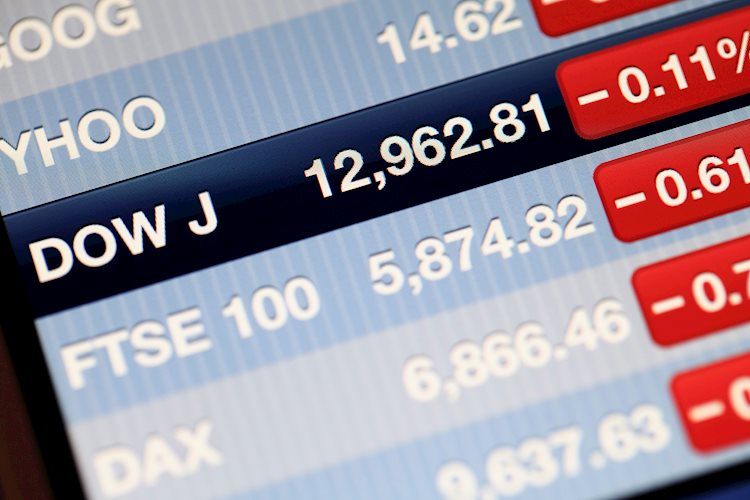The Dow Jones Industrial Average hit a new record high on Thursday, breaking past the 40,000 mark amidst a thin data calendar and positive news on US inflation. Despite the record bids, gains for the index remained modest as investors awaited further clarity from the Federal Reserve regarding potential rate cuts.
Fed officials are still cautious about inflation, maintaining a neutral stance until data confirms that current policies are effective in curbing price growth. While Fedspeak has weighed on risk sentiment, rate markets are still pricing in a 70% chance of a quarter-point cut from the Fed in September. This uncertainty has led to mixed performance among Dow Jones constituent securities.
On Thursday, nearly a third of the Dow Jones’ stocks were in the red, offsetting gains from top performers such as Walmart Inc. which saw a significant surge in stock price after beating earnings and revenue forecasts. Despite short-term fluctuations, the overall trend for the index remains bullish, with the Dow Jones closing in the green for most trading sessions in recent weeks.
The technical outlook for the Dow Jones shows a new all-time high being reached before a slight pullback during the US market session. Despite this, the index remains well above the 200-day Exponential Moving Average and continues to exhibit strong bullish momentum. Investors are closely monitoring market movements to determine the best strategy for navigating the current market environment.
The Dow Jones Industrial Average, known for its price-weighted index of 30 major US stocks, has been a key indicator of market performance since its inception. While criticisms have been raised over its limited scope compared to broader indices like the S&P 500, the DJIA still holds significant influence over investor sentiment and market trends.
Factors such as quarterly earnings reports, macroeconomic data, inflation, and interest rates all play a role in driving the performance of the Dow Jones. Additionally, trading strategies such as Dow Theory, which analyzes trends in the DJIA and other related indices, provide insights for investors looking to make informed decisions in the market.
For those interested in trading the DJIA, there are various options available, including ETFs, futures contracts, options, and mutual funds. These tools offer different ways for investors to gain exposure to the index and capitalize on market movements. Ultimately, staying informed about market dynamics and trends is essential for navigating the complexities of the Dow Jones and maximizing investment returns.


























